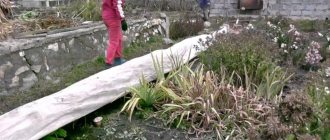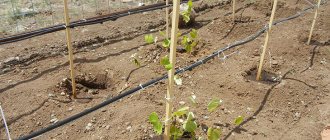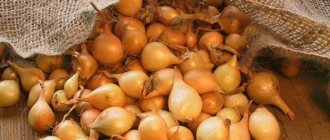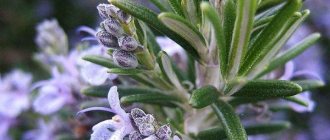Fruits and berries » Grapes
0
1043
Article rating
Kira Stoletova
Grapes are a heat-loving crop. It is grown mainly in the southern regions. But winegrowers in the Moscow region can also grow berries on their plots. At the same time, it is important to choose suitable varieties and cover the grapes for the winter in the Moscow region. Simple rules for wintering a crop guarantee flowering in the spring and further fruiting.
Ways to cover grapes for the winter in the Moscow region
Varieties for temperate climates
Crop varieties should be selected based on the climate of the region. The types of berries should be:
- super early or early;
- winter-hardy and disease-resistant;
- self-pollinating;
- suitable for open ground.
The location where the crop is planted is also considered an important factor. It shouldn't be windy. When choosing non-covering (that is, those that do not protect in winter), grape varieties, remember that in winter without snow, even such types of crops can die. The roots of the bush will freeze, and the plant will not bloom in the spring. The maximum snowless temperature that the bush can withstand is -12°C.
If there is protection in the form of snow, the resistance increases to -50°C. This is the reason why, in the absence of a layer of snow, even uncovered crops are recommended to be covered. There are many methods of protection: from simple and cheap to complex and expensive.
Basic rules for insulating grapes
Regardless of the chosen method of covering grape bushes for the winter, adhere to the following rules:
- do not place grape branches on bare ground without available materials;
- if the ground part remains open and the area is blown by the wind, be sure to install protective barriers on the side of the air flow;
- try to cover the maximum area around the bush (at least a radius of 50-60 cm);
- mulch the areas between the rows;
- disinfect insulation;
- To repel rodents, additionally place other plants next to the grapes that do not like pests (tansy, black elderberry, wormwood, wild rosemary, calendula).
Use leaves, weeds, tomato tops, spruce branches, etc. as mulch between rows.
Procedure time
In the Moscow region, grapes are covered for the winter at a night temperature of -2°C. Covering the crop too early or late leads to:
- condensation formation and root rotting;
- death of shoots due to lack of nutrients;
- infection with fungi or infections in an excessively hot and humid environment.
All these factors do not contribute to the development of the bush and a good quality harvest, so they cover the berries not in winter or late autumn, but at the first permanent frost. To cover the plants productively, healthy shoots are selected, and the crop is cared for during the fruiting season. So she tolerates winter better.
Landing
Grapes in the Moscow region are a covering crop that requires constant care. If it grows on its own, then the yield is low, the clusters grow small, and the berries are tasteless. To get a good harvest, you must follow the rules of planting and subsequent care.
To grow fruit-bearing grapes in the Moscow region, you need to purchase suitable winter-hardy varieties, choose the right place for planting and properly care for the plant.
How to grow grapes in the Moscow region? First of all, it is necessary to find producers of local seedlings of varieties selected for the given area.
Government organizations and nurseries do not deal with this issue. But a huge number of lovers of this crop, who have reached a professional level in breeding the plant, offer good quality seedlings throughout the entire planting season.
Growing grapes in the Moscow region begins with choosing a suitable location. This is a very light-loving culture. When a bush grows uncontrollably, its shoots shade themselves.
Important! The grapes grow well and bear fruit only in an open place without shade.
Planting seedlings in the Moscow region begins on May 20 and continues throughout the season if the plant is grown with a closed root system. Both spring and autumn planting have their advantages and disadvantages. It is important that the earth warms up to +10° C.
How to plant grapes in the Moscow region? The work is carried out in the following order:
- pre-dig a planting hole measuring 80x80x80 cm;
- drainage is poured onto the bottom with a 10 cm layer of crushed stone and broken brick;
- Next comes 10 cm of fertile soil mixed in 2 tbsp. l. phosphorus-potassium fertilizer;
- fertile soil mixed with humus is poured into the hole, leaving a depth of 10 cm unfilled;
- fill the hole with water, wait until completely absorbed;
- immerse the seedling with a slope to the north and water it again;
- In the fall, soil is added to the seedling to the height of the mature shoot and cut to 6-8 buds.
There are no special tricks when planting, and there are no difficulties with how to plant grapes. You just need to pay close attention to the composition of the soil on the site:
- peat and sand are added to clay soils;
- chalk or dolomite flour is poured into the peat soil;
- low and wide beds are planted in wetlands and near the river;
- On sandy soils, the trench planting method is used.
Growing fruit grapes in the Moscow region in open ground is not much different from growing this crop in the south - the same work and the same requirements.
Preparing the plant for wintering
Preparation for winter is carried out as follows:
- Wait for the plant to shed its leaves.
- The bush is pruned and the vine is pressed to the ground with staples. It should not touch the ground.
- Wooden sawdust or blocks are placed under it.
To prevent pests and infections, the vine is treated with lime or copper sulfate. Do not place polyethylene or fallen leaves under the vine: this leads to condensation and rotting.
Bushes with mildew should not be left to overwinter. They are cut, uprooted and destroyed.
They also choose material to cover the crop. You can cover grapes for the winter in the Moscow region with several materials: earth, pine branches, slate, roofing felt, agrofibre. The material should be taken care of in advance. If necessary, it is dried and cleaned of wet soil and mold.
The age of the vine is also important when choosing a method. Young bushes are covered with a “house”, trying not to bend or break. They are protected in several ways at the same time. More mature and stronger plants can be bent to the ground or covered using one of the available methods.
How to cover a vineyard for beginners
If you are just starting to grow grapes, use a simple but effective covering technique:
- In mid-September, start pruning the vines.
- It is recommended to build a shelter in mid-October or with the onset of the first light frosts (the air temperature should not drop below -2°C).
- Sprinkle the base of the stem with soil, which is taken near the center of the plant.
- Tie mature vines in bunches and lay them on top of wood flooring. Secure them with iron structures or other available means.
- To prevent the shoots from coming into contact with the ground, support them with a wooden support.
- To protect the crop from windy weather, install wooden shields or make barriers from mounds of earth.
- Cover the grapes using one of the methods listed above.
- In winter, make sure that the shelter is under snowdrifts about 60 cm high. If snowfalls in the region are light, you can pour the snow yourself, collecting it from the entire area.
Earth cover technology
Straw retains heat well
This method is complicated because it requires thorough preparation. First, the vines are laid out in dug grooves and secured there with wooden blocks or staples. For shelter, dry, loose soil is dug up outside the vineyard.
The vine is sprinkled with straw or peat. For the Moscow region it is better to use a three-layer shelter:
- 5-15 cm of soil;
- 5-10 cm organics;
- 20-25 cm of loose dry soil.
Additionally, the grapes are covered with snow, as it has a good ability to protect crops from freezing.
Roofing felt or film coating
This method requires minor construction skills. The structure is created like this:
- Metal arcs are installed, a film is stretched over them or roofing felt is placed.
- The vine is covered with straw or pine branches.
- For durability, the film is secured with bricks.
The disadvantage of this method is that the materials do not allow air to pass through. From time to time the culture is ventilated, which creates additional difficulties. Unlike roofing felt, slate allows air to pass through and protects against precipitation.
Hay, sawdust and the same pine needles are laid inside. But slate is an expensive material, and not every winegrower can afford it.
Use of agrofibre
This method is the most optimal of those listed. Agrofibre is a special polypropylene material created to insulate berries, protect them from moisture and not block the air. The fabric is fixed above the vine with bricks. It allows air to pass through and retains snow, which gives the bush additional protection.
If the bush is mature, it is not necessary to trim it: it is wrapped in several layers of polypropylene and secured with twine. Plants are covered with leaves if they are healthy and dry.
Timing of plant opening after wintering
The grapes must be opened in the first week of April. Although if the weather is still frosty, the removal of protection is postponed at least until 0℃ on average per day.
If the vineyard is nearby, it will be useful to prepare smoke piles and checkers to protect the vines from frost. They are placed on the sides of the vineyard and set on fire when frost hits. One pile is valid for 100 sq. m.
How to make a smoke pile:
- Straw, dry leaves, shavings are needed inside for combustion.
- Leaves, tops and fuel oil for smoking are laid on top. Everything is covered with a layer of earth.
- Set the structure on fire from below.
The recommended heap size is 1 x 1.5 m. If it is not possible to protect the plants in this way, they are sprayed with plain water. It sets into an ice crust and protects the bush from temperature changes.
The timing of covering grapes for the winter depends on the region where the vineyard is located.
Victor Tatievsky
We all learned from the books of southern authors, but, gradually gaining experience and developing our own technology for northern viticulture, we began to understand that this experience was not suitable for us. It is also better for winegrowers in central Russia to work using our technologies, rather than those from the south. Our technologies are developed “with reserve”: if the winter is harsh, then the measures taken will save the grapes, and if it’s mild, then it’s okay if somewhere we overdo it with protection from frost.
Vitor Tatievsky in his vineyard.
After long discussions of many years of experience, northern winegrowers came to the conclusion that it is better to cover the grapes before frost.
Dubrovsky pink
Victor Tatievsky
It all depends on the technology that the winegrower uses. If it puts a lot of stress on the bush, then the vine ripens early, so you can cover it early - I know a winegrower who covered his bushes until September 15th. I don’t do this myself, but I have to do it before frost. From October 15 to October 20, you can safely close. If you do this later, the vine must be protected from frost, covered with polycarbonate, covering material, or polyethylene.











